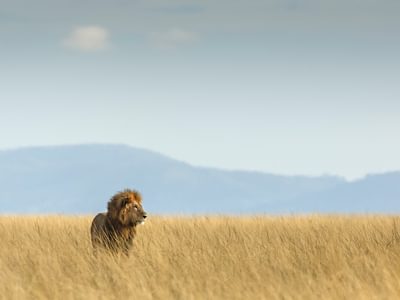
Kenya is blessed with an abundance of protected tracts of land with 23 National Parks, 4 National Marine Parks and 34 National and Marine Reserves. So, we have over 60 areas to choose our top 5 from. Not easy.
What are we looking for in our top 5?
Wildlife. Lots of it. Also, variety – be that landscape, flora or fauna. Importantly we also try and look at it from a customer’s point of view: ease of access; accommodation options; distinctive features; interesting reasons to visit and of course the conservation angle.
1. The Masai Mara & Conservancies
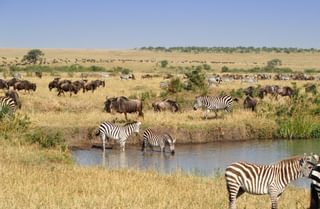
This is the one everyone knows about and the most obvious, with good reason. The Masai Mara National Reserve sits on the border with Tanzania and forms part of the vast circular migration route, fondly called the Great Migration. Hosting this incredible spectacle every year, generally between sometime in August lasting through to October, where the great herds of migrating wildebeest and zebra tackle the mighty crossing of the Mara River in search of pastures new, literally is a draw for many visitors. Take a look at our guide to the great migration in Kenya.
Home to approximately 25% of Kenya’s wildlife, the concentration and variety of game in the area is immense, not only during time of the migration but throughout the year and you can expect to see all of the ‘Big 5’ (although rhino are rare and you would be very lucky see one), as well as a whole range of plains game. Birdlife is fantastic too with over 550 bird species.
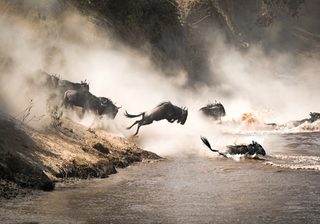

Masai Mara National Reserve
The Masai Mara Reserve is accessible to all, subject to paying an entry fee, and as a result, the eastern flanks can become quite busy during peak periods. The Mara Triangle in the west where Governors Camps and The Serena are located offers one of the best spots in the reserve itself. Naibor Camp and Sala’s Camp are both well positioned for prime river crossings during the migration but there is a plethora of camps to choose from ranging in size, style and price.
Private conservancies
The more recent success story surrounding the Masai Mara are the private conservancies that have grown out of the desire for more privacy, fewer tourists and greater sustainability, although they come at a higher price point. The fact is that a large percentage of the game in the Mara ecosystem thrives outside of the reserve boundaries (although there are no physical boundaries). Loosely built around the success of the model which was pioneered in South Africa – the most famous example being the Sabi Sands Conservancy in the Greater Kruger Area – these conservancies offer a partnership between the local Masai landowners (of which there are hundreds) and the camps and lodges in situ. It’s a beautiful symbiotic relationship with foreign money coming in through conservation fees and the Masai pastoralists living side by side with safari-goers. The conservancies border either the Masai Mara Reserve or one another without fencing, allowing the game to move freely through these areas and giving greater access to those looking for a more private experience away from other vehicles.
There are 15 conservancies all ranging in size and shape with Mara North the largest and the original being a popular choice due to its size and position. Camps you are going to find here – Serian Camp, Elephant Pepper, Saruni, Off-Beat, Karen Blixen Camp and Royal to name the majority. We also like using Naboisho, home to Ol Seki, Leopard Hill and Eagle View. Enonkishu is further from the action but has stunning landscape and feels like an adventure especially when staying at House in The Wild. We would also mention Olderkesi which is home to Cottars Camp, slap bang on the eastern border of the Mara and Tanzania. Unless specifically going to see the migration crossings we tend to veer towards the conservancies over the reserve itself.
Wondering when to go? Take a look at our best time to visit the Masai Mara guide.
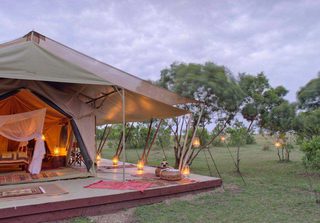
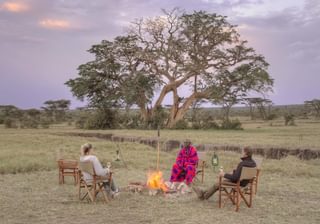
2. Lewa Wildlife Conservancy, including Borana.

Lewa is a shining beacon of an example where conservation is a real winner. Situated in the foothills of Mt Kenya with spectacular scenery this sanctuary has been rewilded and was farmland for years - it was originally founded by the Craig family in the 1920's through a colonial settlement program. In the 1980's part of the ranch was converted into a sanctuary for Black Rhino whose numbers had been reduced to less than 300 due to poaching. In 1983 the Craigs and Anna Merz – who funded the program – decided to establish the fenced and guarded Ngare Sergoi Rhino Sanctuary at the western end of the reserve.
In 1995 the Conservancy was founded, and the area expanded to include the whole farm and part of the Ngare Ndare Forest Reserve. Itis now home to a wide variety of wildlife including the rare and endangered black rhinos, Grevy's zebras and sitatungas. It also includes the big five (lion, leopards, elephants, rhinos and Cape buffaloes). Lewa holds over 14% of Kenya's entire rhinoceros population and the largest single population of Grevy's zebras in the world (approximately 350 individuals). The reserve is now over 93,000 acres and a certified UNESCO World Heritage Site.
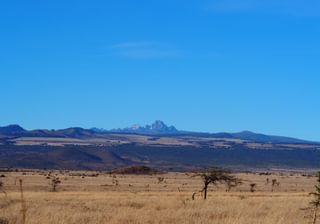
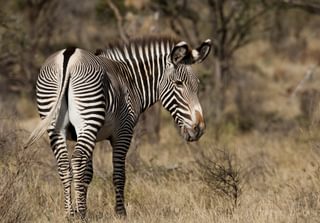
Within this protected landscape there are 10 different options for where you can stay. All of them have a different focus and price point, although none are cheap. Our favourites tend to include Lewa Wilderness, Lewa House and Borana Lodge. However, there are also various exclusive-use houses including the beautiful Arijiju.
The Conservancy has a look and feel of high-end safari holidays and attracts a well-heeled crowd, possibly partly due to the rumour that William and Kate got engaged here in 2010, but more likely due to the beautiful landscape, abundance of animals and all of this within a stunning private reserve that has sustainability and conservation as its heartbeat. It combines beautifully with the Masai Mara where you are unlikely to see rhino, using a direct light aircraft flight between the two. Read about a Kenya honeymoon which combined Lewa & Masai Mara here.
If you want to try something different, think about joining the Lewa Safaricom Marathon, an annual event held to raise money for the Conservancy's environmental initiatives and is considered one of the toughest marathons (or ½ marathon) on the planet. A very rewarding undertaking, as experienced by the author.

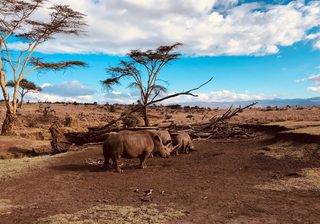
3. Samburu
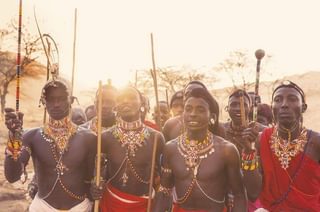
Whilst Lewa offers a safari in stunning surroundings it still in my opinion doesn’t compare in beauty to the arid region of The Samburu National Reserve. Samburu is only about a 2-3 hour journey north of Lewa, but the contrast is huge. Whilst Lewa sits at altitude in the fertile landscape at the foot of Mount Kenya, Samburu is much dryer and hotter. The landscape here is almost desert shrubland, especially in the last few years of minimal rain, and the earth is a beautiful dark red colour which influences the shade of colour of the wildlife but more obviously helps to dye the enormous Ewaso Ngiro River which runs like a huge chocolate waterway, one that Willie Wonka would be proud of, through the reserve and surrounding areas.
Samburu offers a variety of animals not found in places like the Masai Mara. So much so that there is a ‘Samburu 5’ which includes some endemic game. These are: the long necked ‘Gerenuk’, an antelope that looks like an Impala but has a very long neck and spends a lot of its time on its hind legs browsing higher than it should be able to; the beautiful and very rare ‘Reticulated Giraffe’; The endangered Grevy’s Zebra; the beautiful Somali Ostrich and The Boisa Oryx, normally associated with travel to Namibia. The reserve often does deliver on lion, as well as, a large population of elephant, hyena and the more regular planes game. The beauty of having this enormous river running through a very arid area is that the riverside is always busy – either with elephants crossing or baboons drinking. The show is always on.
The real showstopper in this part of the world for my money is the landscape. You have vivid colours of the red earth contrasting with the dots of leafy green of the shrubs and all around are outliers of granite rock, some look like mounds others would dwarf Uluru. The Mathews Mountain Range cloaks the horizon beautifully and on most days, you have a stunning view of Mount Kenya in the background. In my opinion Samburu is not about quantity of animals but about the whole package and even if you were to visit and not see a single animal, I can guarantee that the terrain is strong enough to deliver on its own. A beautiful place away from the crowds with easy access by air from Nairobi, or by road from Laikipia and then direct connecting flights down the Mara makes this one of my top 5 reserves. Check out Saruni Samburu for its views.

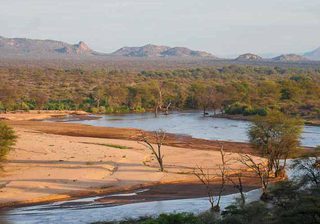
4. Meru
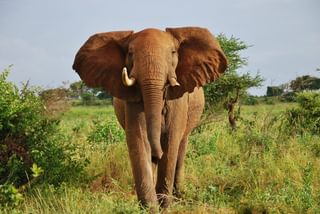
Meru National Park is a Kenyan national park located east of Meru and Mount Kenya, just over 220 miles from Nairobi. Covering an area of 340 square miles, it is one of best known national parks in Kenya due to a certain Lioness called Elsa. Meru was one of the two areas in which conservationists George Adamson and Joy Adamson raised Elsa the Lioness, made famous in the best-selling book and award-winning film, 'Born Free'. Elsa the Lioness is buried in the park and part of Joy's ashes were scattered on her gravesite.
In the 1980’s Meru National Park was virtually off-limits to all due to the levels of poaching that were occurring. Between the years 2000 and 2005, the Kenya Wildlife Service, helped by the Agence Française de Developpement and International Fund for Animal Welfare restored Meru to one of the most promising tourist destinations in East Africa, including a poacher-proof rhino Sanctuary. Today, Meru is still one of the least visited of Kenya’s big parks, which from the visitor's point of view is all the better: the scenery, like in Samburu is part of the attraction and it generally has good and consistent rains, resulting in well-watered healthy flora which in turn keeps the herbivore population happy, and of course, predators appear where there is plenty of plains game.
The park has a wide range of wild animals including elephant, lion, leopard, cheetah, black rhino, white rhino, Grévy's zebra, and hippopotamus as well as various plains game both common and endemic to the area around Mt Kenya. It also has a handful of upmarket lodges – the jewel in the crown being Elsa’s Kopje which offers luxurious accommodation and stunning vistas.
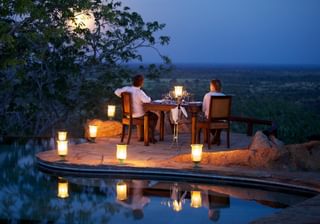
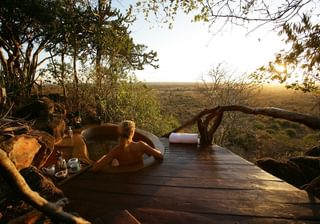
5. Tsavo East and West
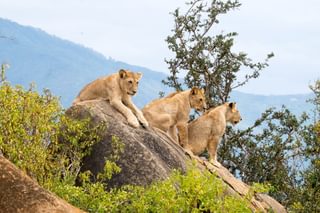
Opened in 1948, Tsavo National Park is Kenya's largest and one of the country’s oldest National Parks. It is located in the southern part of Kenya and it is divided into Tsavo West and East - the two are separated by a railway line that connects Mombasa and Nairobi. Due to its location, it is accessible for a shorter safari for those who are spending more time on the coast. For this reason, it can get quite busy but it means that anyone can enjoy a safari even if it’s just for a day. It is one of the only safari destinations in Kenya that is accessible by train from either Nairobi or Mombasa making it as environmentally friendly as any of its competition.
Famous for man-eating lions during the construction of the railway line, Tsavo West consists of a rugged mountainous landscape, as well as wooded grasslands. In contrast, Tsavo east national park is characterized by semiarid grasslands and savannah where wildlife species can easily be seen.
Wildlife you are likely to see in both the west and east include rhinos, hippos, elephants, buffalos, leopards, lions, hartebeests, impalas, elands, fringe-eyed oryx, giraffes and kudu. But it is more than just wildlife, it offers a variety of other attractions that make this national park a great option for a family safari in Kenya.
Attractions in Tsavo West:
- Mzima springs: Known to have hippos and crocodiles the springs consist of four springs in the western part of the national park. Mzima springs get its water from a natural reservoir under Chyulu hills. The springs are a source of water for the wildlife species which graze around the savannah plains.
- Ngulia Rhino sanctuary: Home to a number of endangered rhinos which are kept and bred by the Kenya wildlife service and the African wildlife foundation.
- Shetani lava flow and caves: The black folded lava which flows across the savannah as well as the amazing views. The caves which were formed as a result of volcanic activity are also found near the lava flows.
Where to stay: check out Serena Lodge and Finch Hattons
Attractions in Tsavo East:
- River Galana, attracts a huge number of animals to drink.
- Yatta plateau: The plateau is characterized by plain wide valleys as well as shallow-spaced valleys which were formed as a result of lava flows.
- Lugard falls: Characterized by rock patterns of cooled lava, the falls were named after Lord Fredrick Lugard as he made his way through the region. At the bottom of the falls you can see buffalos, hippos as well as crocodiles.
- Mubanda rock: During the dry season, wildlife species gather around the water catchment area near the stratified rock offering good views of the wildlife drinking from the pool.
- Kanderi swamp: a fresh water source for the wildlife species in the national park.
Where to stay: have a look at Satao Camp
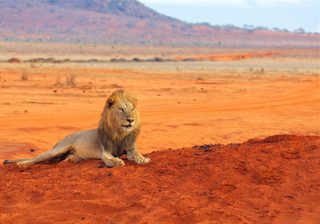
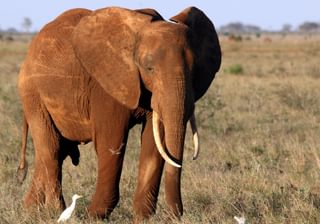
Other parks worth a mention:
Nakuru
A small park near the town of Nakuru and easily accessible if staying in Naivasha. Originally set up to protect rhino, it offers a good day-visit option. The chance of seeing white rhino is excellent and the only Big 5 member you will not see is elephant as the park is fenced. It’s a great place to see leopard as well due to its substantial forests.
Where to stay: Loldia House
Hells Gate National Park
In the same geographical location within the rift valley Hells Gate offers great example of geo-thermal activity and interesting geology. There is some game but this is more about the topography and the beauty of being allowed to cycle within a national park.
Where to stay: Loldia House
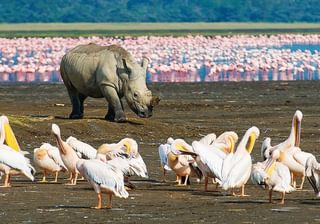

Central Island of Lake Turkana
This island deserves a mention for its isolated magnificence and Jurassic feel – if you get a chance to visit don’t turn it down. The lake’s aqua blue waters wash up onto the black lave making quite a sight to behold. Central Island is composed of more than a dozen craters and cones, three of which are properly active volcanoes and 3 that are filled by small lakes. The two largest lakes (crocodile and Flamingo) partially fill craters up to a kilometre wide and about 80 m deep. It is informally known as Crocodile Island as it is the breeding ground for the world’s largest concentration of Nile crocodiles.
Nairobi National Park
Often dismissed as a bit of a sideshow the park actually offers some really good opportunities to see some game you may possibly miss elsewhere in Kenya. Notably rhino, there is a good concentration of black and white. Whilst the areas closer to the main gate are quite busy, move beyond these and you can get a pretty authentic experience with the Nairobi high rises loitering in the background.
Where to stay: Ololo Lodge
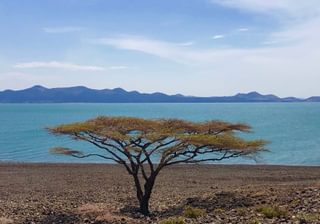
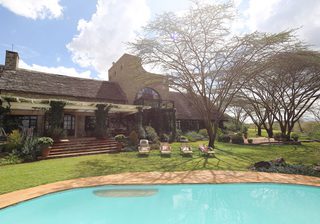
Wondering when to visit Kenya? Take a look at this guide on the best time to visit Kenya.
Looking for some more inspiration? Take a look at our best safari holiday ideas, our favourite family safaris, our big five safari guide or our top African safari honeymoon suggestions.
Call us today on 01768 603 715 to find out more or enquire here.































